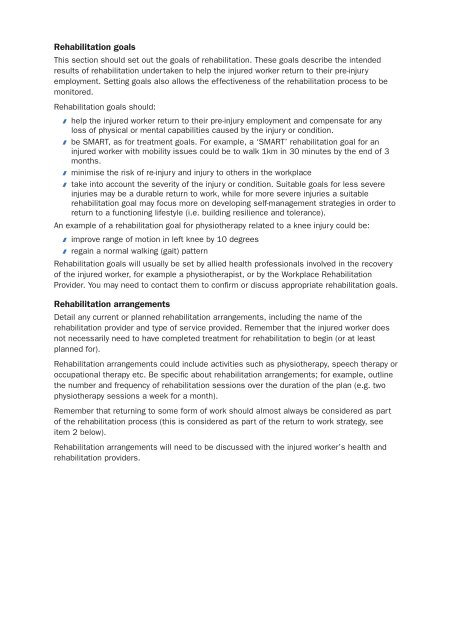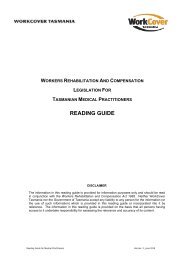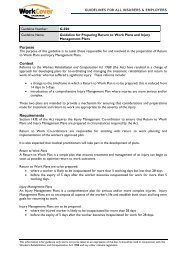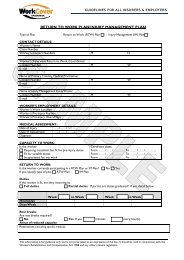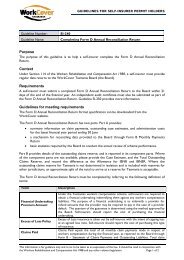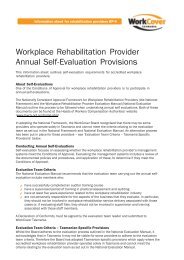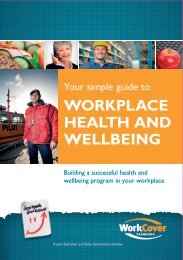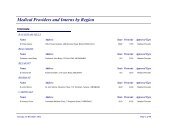Preparing injury management plans - WorkCover Tasmania
Preparing injury management plans - WorkCover Tasmania
Preparing injury management plans - WorkCover Tasmania
Create successful ePaper yourself
Turn your PDF publications into a flip-book with our unique Google optimized e-Paper software.
Rehabilitation goalsThis section should set out the goals of rehabilitation. These goals describe the intendedresults of rehabilitation undertaken to help the injured worker return to their pre-<strong>injury</strong>employment. Setting goals also allows the effectiveness of the rehabilitation process to bemonitored.Rehabilitation goals should:AAhelp the injured worker return to their pre-<strong>injury</strong> employment and compensate for anyloss of physical or mental capabilities caused by the <strong>injury</strong> or condition.AAbe SMART, as for treatment goals. For example, a ‘SMART’ rehabilitation goal for aninjured worker with mobility issues could be to walk 1km in 30 minutes by the end of 3months.AAminimise the risk of re-<strong>injury</strong> and <strong>injury</strong> to others in the workplaceAAtake into account the severity of the <strong>injury</strong> or condition. Suitable goals for less severeinjuries may be a durable return to work, while for more severe injuries a suitablerehabilitation goal may focus more on developing self-<strong>management</strong> strategies in order toreturn to a functioning lifestyle (i.e. building resilience and tolerance).An example of a rehabilitation goal for physiotherapy related to a knee <strong>injury</strong> could be:AAimprove range of motion in left knee by 10 degreesAAregain a normal walking (gait) patternRehabilitation goals will usually be set by allied health professionals involved in the recoveryof the injured worker, for example a physiotherapist, or by the Workplace RehabilitationProvider. You may need to contact them to confirm or discuss appropriate rehabilitation goals.Rehabilitation arrangementsDetail any current or planned rehabilitation arrangements, including the name of therehabilitation provider and type of service provided. Remember that the injured worker doesnot necessarily need to have completed treatment for rehabilitation to begin (or at leastplanned for).Rehabilitation arrangements could include activities such as physiotherapy, speech therapy oroccupational therapy etc. Be specific about rehabilitation arrangements; for example, outlinethe number and frequency of rehabilitation sessions over the duration of the plan (e.g. twophysiotherapy sessions a week for a month).Remember that returning to some form of work should almost always be considered as partof the rehabilitation process (this is considered as part of the return to work strategy, seeitem 2 below).Rehabilitation arrangements will need to be discussed with the injured worker’s health andrehabilitation providers.


